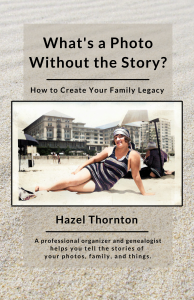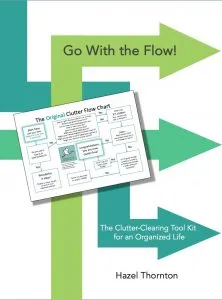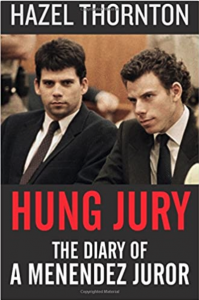Inspiring Prison Programs

This is a portion of the mural at the RJ Donovan Correctional Facility. It is part of Lyle’s Green Space project, with Erik participating as lead painter.
Now that Erik and Lyle Menendez are eligible for parole — Menendez Miracle #6 — it no longer seems pointless to think about what they might do when they get out of prison.
Rehabilitation
The brothers have said that they’d like to continue the work they started in prison.
From Lyle’s resentencing statement:
I have worked hard to be a better person. I have taken on roles in inmate government, learning to help others solve problems, and in doing so, I began to develop greater self-worth and compassion. I have participated in self-help groups…built strong, healthy relationships with correctional staff, therapists and fellow inmates. I have learned to access professionals for support…I have learned to process anger instead of burying it…I have learned to ask for help when I need it.
If afforded an opportunity for another chapter of life beyond the prison walls, I plan to continue working with the sex abuse survivor community to spread awareness. I also plan to continue to serve the incarcerated population through community building to change the culture of corrections.
From Erik’s resentencing statement:
I was given the opportunity to serve others. I began caring for the elderly, the disabled, and the terminally ill. It may seem small, but that act of service changed everything for me. I mattered to others. I had purpose. I created the Life Care & Hospice program, and through that work, I discovered a new way of seeing life. I started focusing on living with purpose. I began to understand what it means to form a real connection — even in here. To be part of a community. To show up as a husband and a father, even from behind these walls. I began getting involved in self-help programs. I started educating myself, and then I began leading and encouraging others.
It’s this same sort of self-improvement and rehabilitation that Lyle and Erik hope to continue engendering in other inmates through special programs. The fact that they were mentoring other inmates while they, until now, had no hope of parole for themselves, speaks volumes about their characters.
Why Special Inmate Programs?

Erik Menendez created this logo for the Helping Without Prejudice Foundation.
I’ve learned that while the United States has 5% of the world’s population, it has 25% of its prisoners. The cost to taxpayers is $80 billion per year. The recidivism, or relapse, rate is 75%.
Meanwhile, the prison system in Norway has a recidivism rate of only 20%. This is inspiring and is known to have inspired the Menendez brothers, too.
Here’s a quote from the Halden Prison video I’ve linked to in the next section of this post:
It’s basically inserting humanity into the prison system…The punishment should be loss of freedom, not loss of dignity.
At the end of the day this is not just good for the prisoners and the prison, but society as a whole… the hope is to prepare inmates for life after they get out. Moving away from managing prisoners to creating good neighbors.
Prison Documentary Rabbit Hole
I’ve watched several documentaries recently about programs designed to humanize and rehabilitate inmates. In addition to benefitting the prisoners themselves, the programs have a positive impact on the prison system, the inmates’ families, and the nearby communities who either directly, or indirectly, benefit from the improved condition of inmates who are released.
Documentaries I’ve seen:
- Unleashing Hope: The Power of Service Dogs for Children with Autism — Hulu trailer on YouTube — Dogs are trained by Guide Dogs of America and inmates at Richard J Donovan Correctional Facility where Lyle and Erik are living.
- The Quilters — Netflix trailer on YouTube — Inmates make quilts for local foster children.
- EP 1 | PRISON CAT, GALILEO | THE CATS THAT RULE THE WORLD | SHEBA® — YouTube (20 min.) — A program in which inmates partner with the Humane Society to care for cats and get them adopted.
- Women inmates find hope with safe choir — YouTube (6 min. news segment)
- World’s Most Luxurious Prison | Halden Prison: Vacation For Murderers? — YouTube (45 min.) — I watched this one because Lyle and Erik have talked about being inspired by the Norwegian prison system.
Related:
- Sing Sing — HBO Max trailer on YouTube — A film about the true story of a group of incarcerated men at ‘Sing Sing’ prison who participate in a theater program.
- Seeds of Change — PBS trailer on film’s website — An organic farmer in Maine sets out to transform the prison food system. (Since I haven’t seen it, it could be more about the farmer than the prisoners, but either way, I like the title.)
- 6 Inspirational Prison Reform Documentaries You Need to Watch (article with embedded videos) — I saw the first one a while back and recommend it.
- Six Norwegian Prisons 1850 to 2020 (website) — Ideas, Spaces, Experiences
Musical Interlude:
Neema – Narok Prison Choir (song)
Zimbabwe Prison Choir (song)
X-Raided – Sins of the Father (official lyric video)
(keep reading for more on X-Raided)
What I’d Like to See

Better get used to 54- and 57-year-old Erik and Lyle Menendez, because they are one step closer to freedom!
These documentaries and websites are great, and many of them are only 20-30 min long. But they’re spread out all over the streaming platforms. And I’d like to see more.
What I propose (not that I have the connections to make it happen) is a series that brings them all together in one place, including some of the films that have already been made and adding as many new ones as are worthwhile and feasible. Here are my suggestions for new episodes of this fantasy series:
- Erik Menendez’s programs established under the Helping Without Prejudice Foundation: Life Care & Hospice, Insight Meditation, VIVE (Victim Impact and Victim Empathy), and 12-Step Recovery with Insight Meditation.
- Lyle Menendez’s Green Space project: Rehabilitation Through Beautification: The Green Space Project (Lyle Menendez founder, Erik Menendez lead mural painter). Short video clip: How Lyle Menendez Wants to Totally REIMAGINE Correctional Facilities. This clip is from a very worthwhile 2 Angry Men podcast episode featuring both brothers who called in from prison. (P.S. The “2 Angry Men” are hosts Harvey Levin and Mark Geragos, not Lyle and Erik.)
- An episode about rapper Anerae Brown (X-Raided), including the recording studio he created at Richard J Donovan Correctional Facility, where he was incarcerated and became friends with Lyle and Erik. He credits them with mentoring him and helping him to get paroled after 26 years in prison. Watch this Surviving the Survivor podcast episode with guests Robert Rand and Anerae, who arrives @37 minutes in but is worth the wait.)
- Echo Yard, a special section of the Richard J Donovan Correctional Facility that allowed Lyle and Erik to create programs to help rehabilitate themselves and their fellow prisoners. (Article about Echo Yard)
- Additional episodes about other prisons and programs that benefit local communities.
What’s more inspirational than someone who has turned their life around?
And the people who help make that happen?
Have you seen any of these documentaries?
Which others have you seen and recommend?
What episodes or programs would you like to see?
Please share with us in the comments below!
______________________________________________________
- Hazel Thornton is an author, genealogist, and retired home and office organizer.
- Book: Hung Jury: The Diary of a Menendez Juror
- Book: What’s a Photo Without the Story? How to Create Your Family Legacy
- Book: Go With the Flow! The Clutter Flow Chart Workbook
- Feel free to link directly to this post! Click here to ask about other uses.
- Copyright 2025 by Hazel Thornton, Organized for Life and Beyond
______________________________________________________________________________
Share this:







Oh my gosh, Hazel, this is fascinating. I knew that there were writing courses in prisons and about the firefighting programs in western prisons, but had no idea that all of this existed. There’s so much to explore.
I have complex feelings about systemic bias and recidivism on one hand and the seeming impossibility of properly punishing and ever redeeming certain types of violent criminals on the other hand, but you continue to open my eyes. Thank you for writing this!
I don’t know that all criminals are rehabilitate-able. But the ones who are need more programs like these. And for the ones who are rehabilitated, released, and still find themselves not given a chance by society, maybe the more we all knew about the programs the better. Thanks for reading my post and commenting!
I watched “The Quilters” and it was very inspiring and I really hope more documentaries like this are made so people can see what good can happen when they’re given a chance. It doesn’t work for all, but it sure does show the positive effects that can happen!
Hi Carla, I’m glad you enjoyed “The Quilters” and can see the benefits of such programs!
I’ve had a heart for the inmate since participating in our church’s Angel Tree program at Christmas. It’s a way for us to “adopt” and buy gifts for children of incarcerated parents.
I’ve long felt that prisons aren’t really accomplishing much. Yes, they keep people from repeating crimes that hurt our society. This is good. But the only thing I see that seems to make a difference in lives is when prisoners put their faith in Jesus. This changes them!
I love that quote about restricting freedom without removing dignity. A worthy goal, and so difficult in the prisons that house the especially dangerous. Even watching the Martha Stewart documentary I was surprised to hear how she was treat in “Camp Cupcake.” Not much dignity.
For people like Erik and Lyle, I wish for a second chance. They were dealt a rough beginning, and I hope will be able to continue their efforts to make the world a better place. I love their goals!
I love how your Jury Duty experience all those years ago has inspired you to stay connected to the Menendez’s story and development. In turn, you are opening our eyes to what’s possible.
Surely, our current prision system isn’t working. The stats you shared about recidivism is sobering. However, with programs like the ones described here, there is hope.
I haven’t seen any of the documentaries you mentioned and look forward to watching some.
I haven’t seen any of the documentaries. Near where I lived the prison had a volleyball team. For a while the team came to the gym to play other non prison teams in the city league. After while the team wasn’t allowed to come so teams when into the prison to play. I have also contributed books to prison libraries. Only small contributions on my part but it does open your eyes to how it feels to be incarcerated when you walk through those gates and they clang shut behind you and there is no getting out until a guard lets you.
Thanks for sharing.